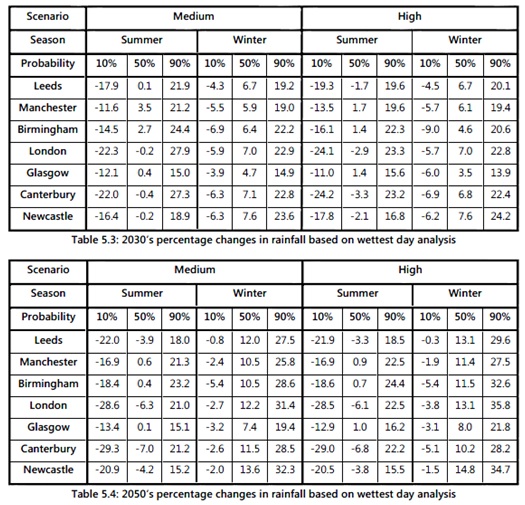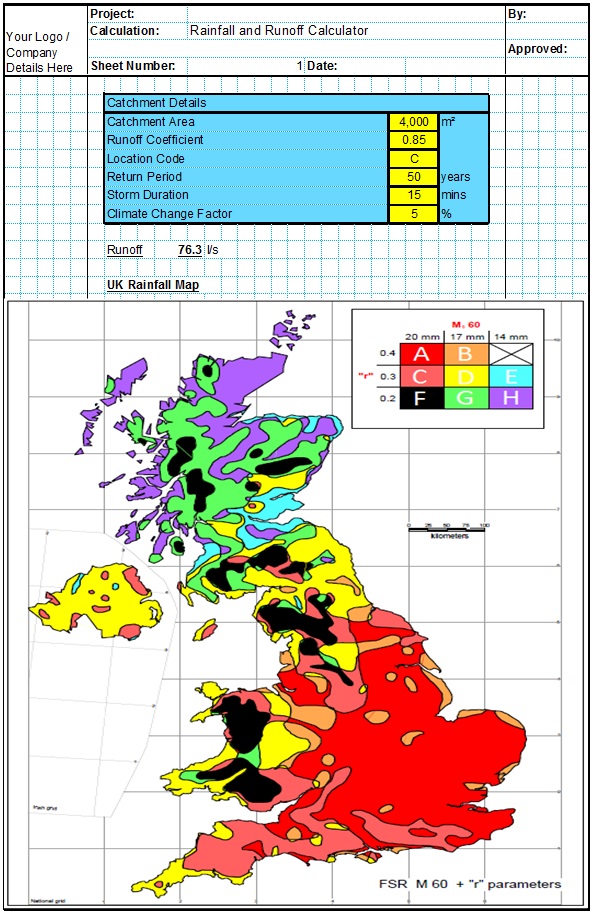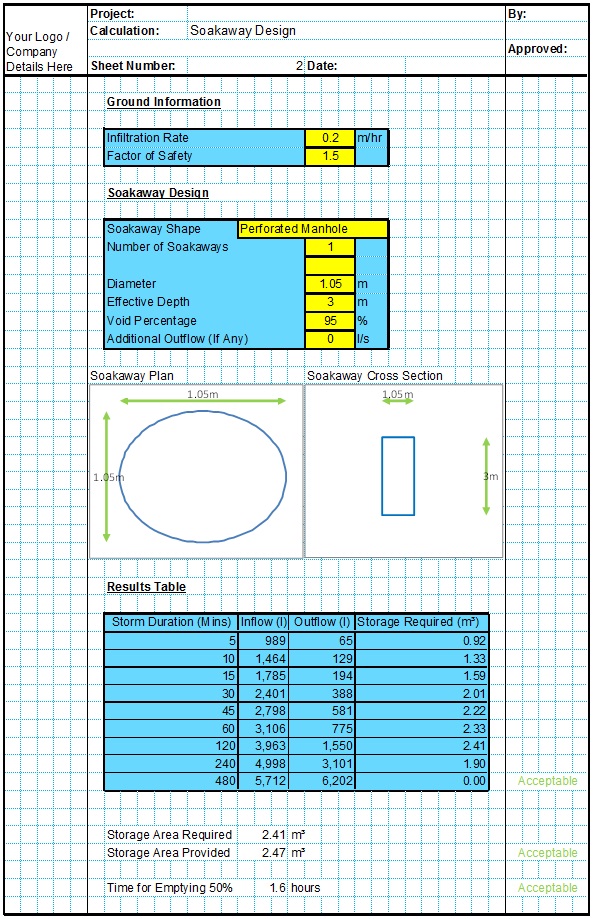The Climate Change Allowance factor is a multiplier applied to rainfall intensities of all methods to allow for the anticipated increase in the intensity of rainfall events over the next 100 years due to climate change. This factor is important for all drainage design projects, particularly flood risk assessments.
Climate Change Allowance Guidance
There are a number of different guidelines on appropriate Climate Change Allowance values for design, and these are of course changing regularly as new data on climate change is published. Selecting a suitable value depends on the type and design life of the structure.
PPS25 published in 2006 recommended a Climate Change Allowance of 1.3, and this recommendation was duplicated in many other documents such as Sewers for Adoption. In 2009 new climate change data was issued in UKCP09 and subsequent publications adopted a recommendation of 1.4 as an upper end projection.
BS EN 752:2017 advises that a Climate Change Allowance of 1.4 is applied in general circumstances for new storm drains. For short life developments or for analysis of existing systems, other Climate Change Allowance factors are given in the table below.

Earlier guidance BS 8582:2013 advises that rainfall intensities should be given an uplift of 1.3 when designing for new developments. Again other Climate Change Allowance factors are given in the table below.

Appropriate Design Values
There is still some debate as to whether either of these values are appropriate for all new drainage design. Certainly storm drains tend to be among the longest lasting infrastructure elements, they tend to outlive their original purposes as they are difficult and expensive to upgrade. So a conservative approach would be appropriate in most cases. However, climate change will not affect the whole of the UK in the same way. This is illustrated in the below table taken from the UKCP09 data.

In practice, an assessment must be made on a case by case basis to determine the most appropriate Climate Change Allowance value. Where it can be accommodated without significant expense, a value of 1.4 would usually be most appropriate and this is given as the default value in the CivilWeb Rainfall & Runoff Spreadsheet. For some temporary systems or in areas expected to be less affected, a lower value may be appropriate.
Related Spreadsheets from CivilWeb;
Runoff Calculator Spreadsheet
This spreadsheet calculates the design runoff flow for a site in accordance with the a number of different methods including the Wallingford Procedure.
Soakaway Design Spreadsheet
This spreadsheet calculates the requirements for a soakaway system and assists the user to design a suitable system.

